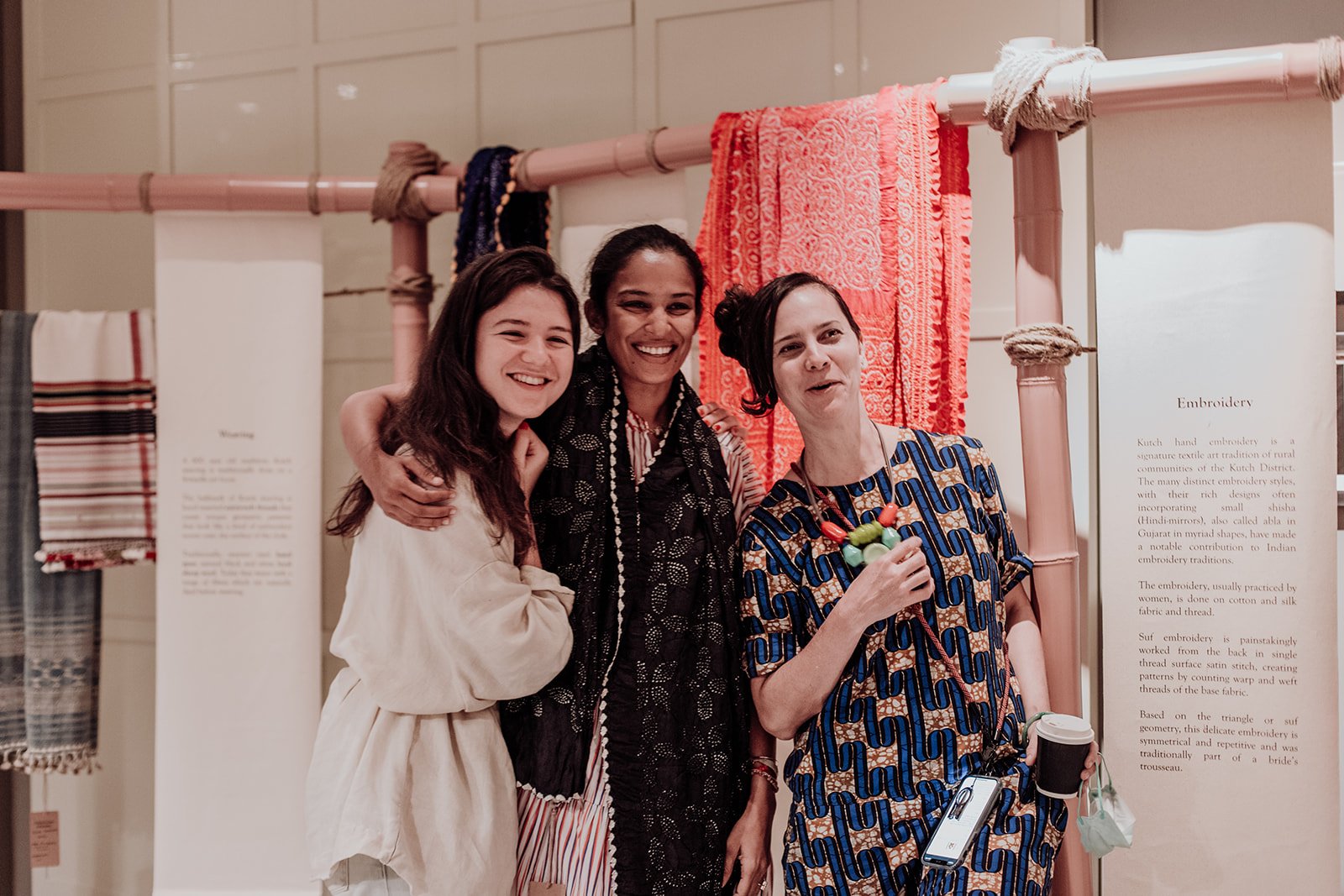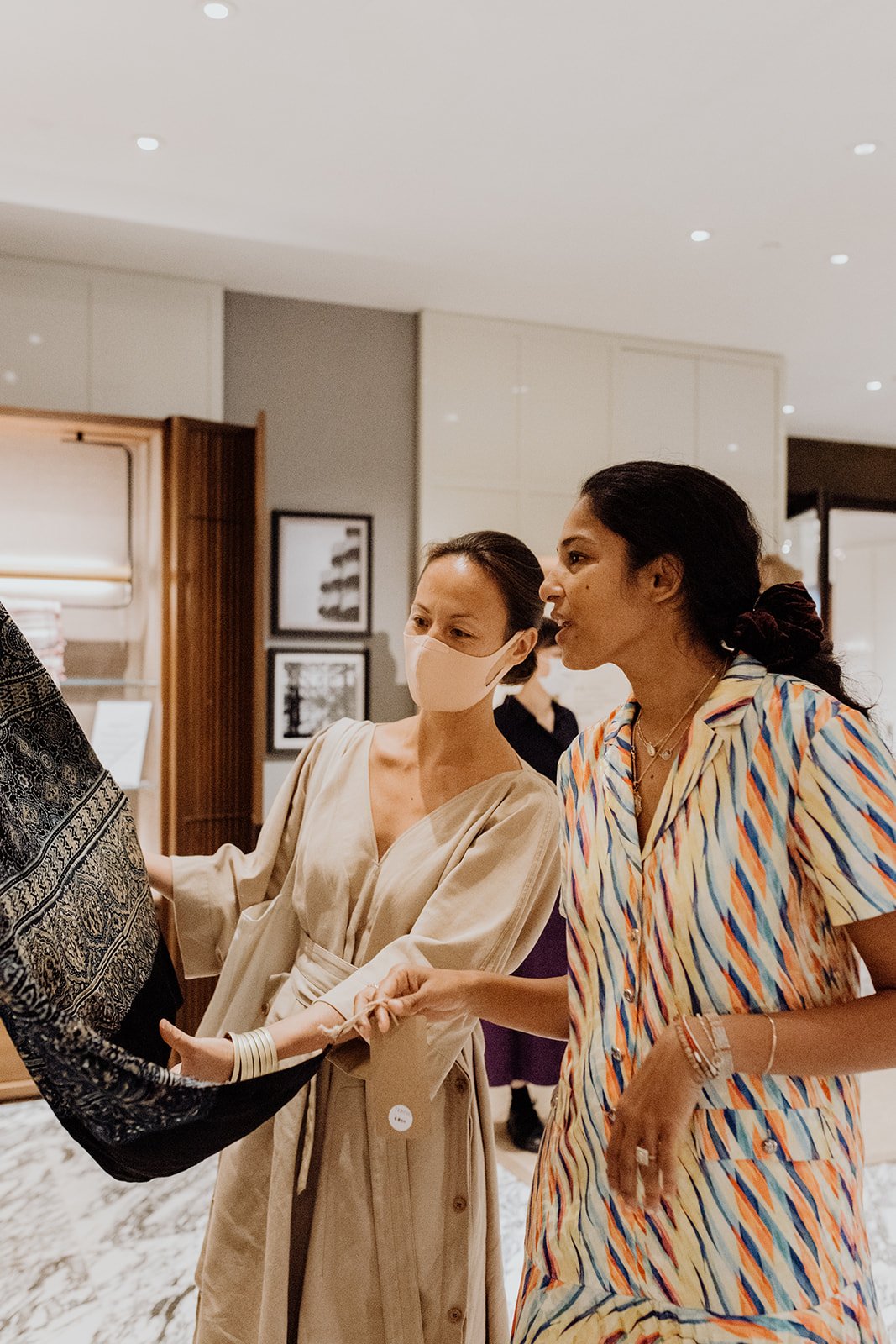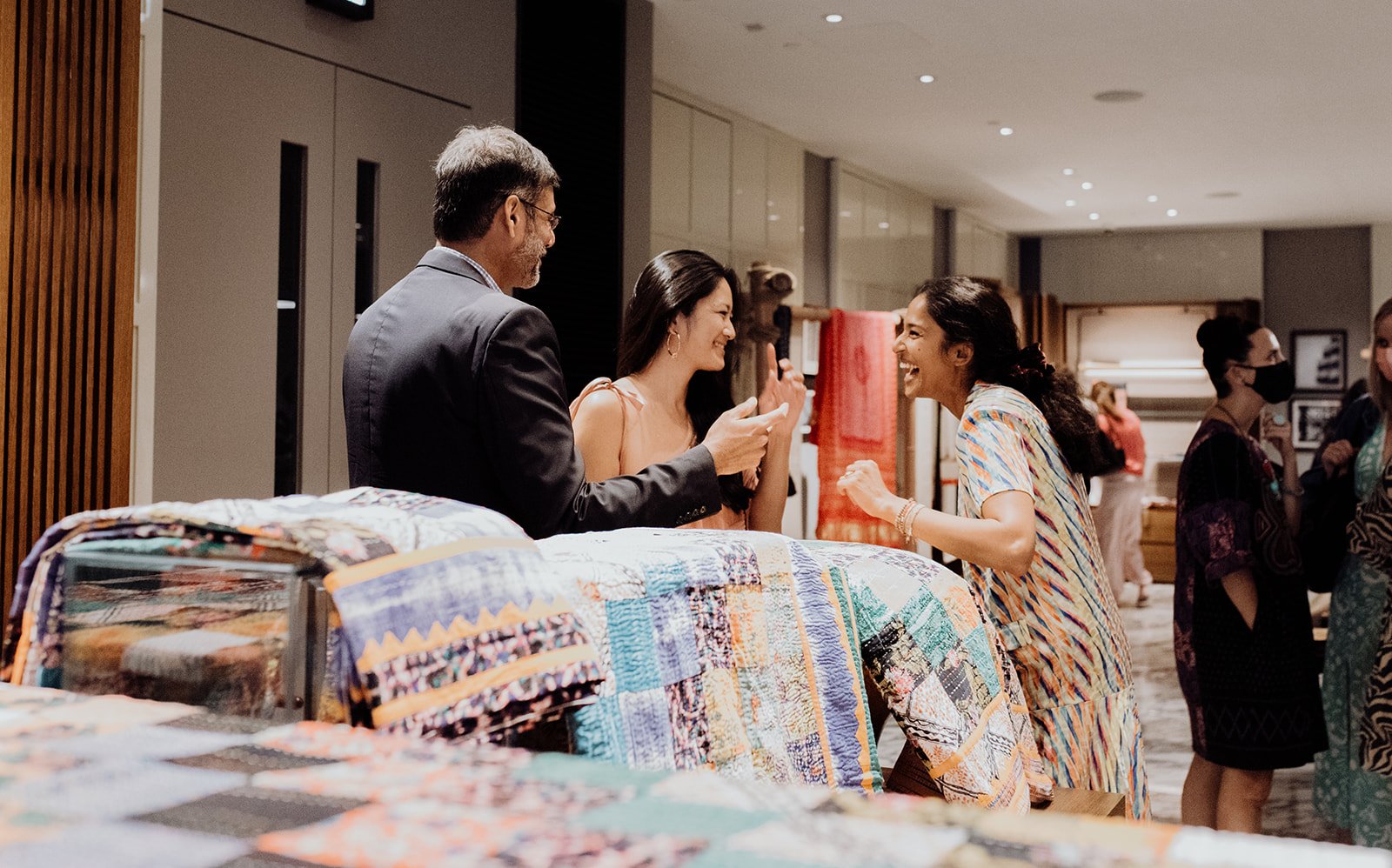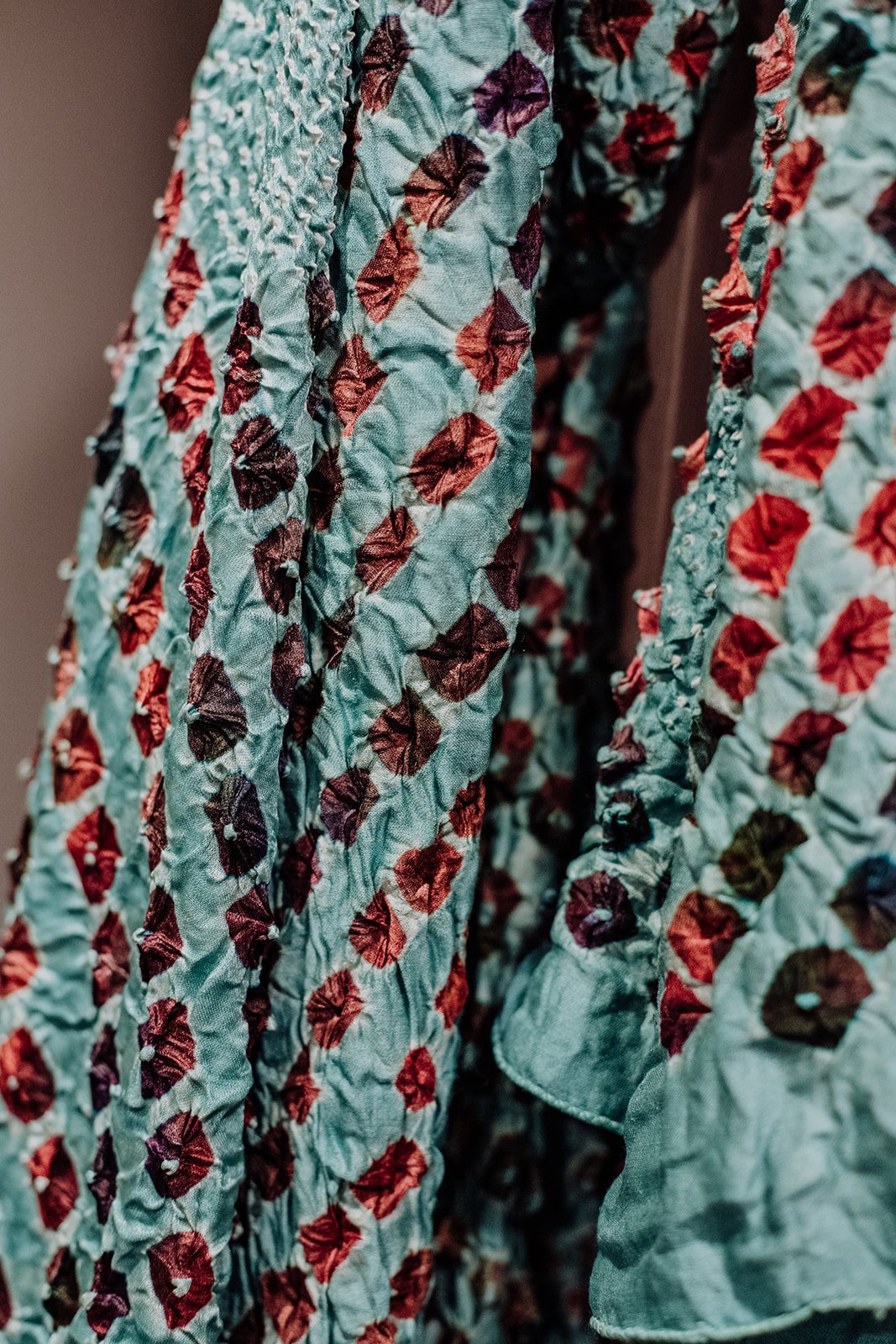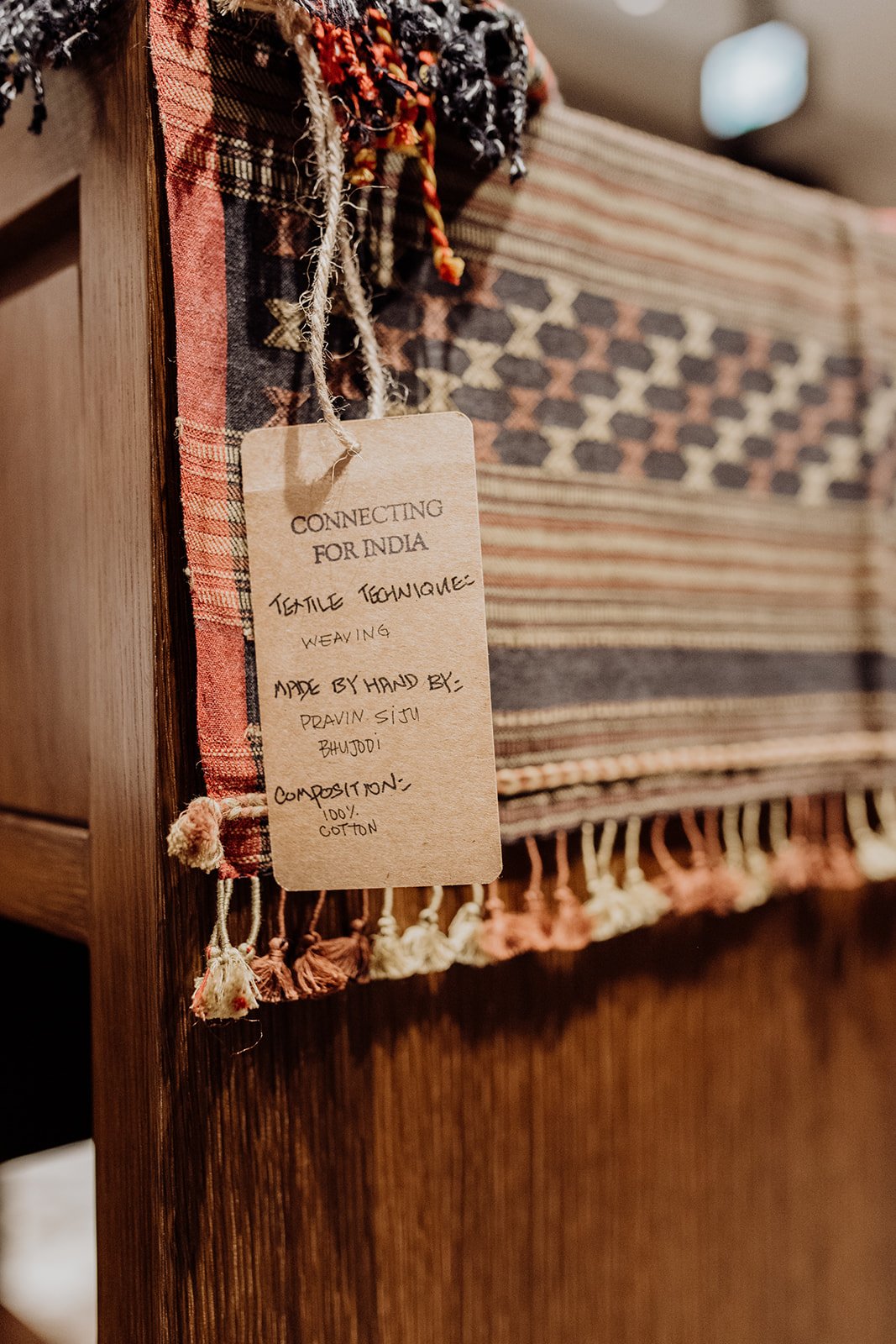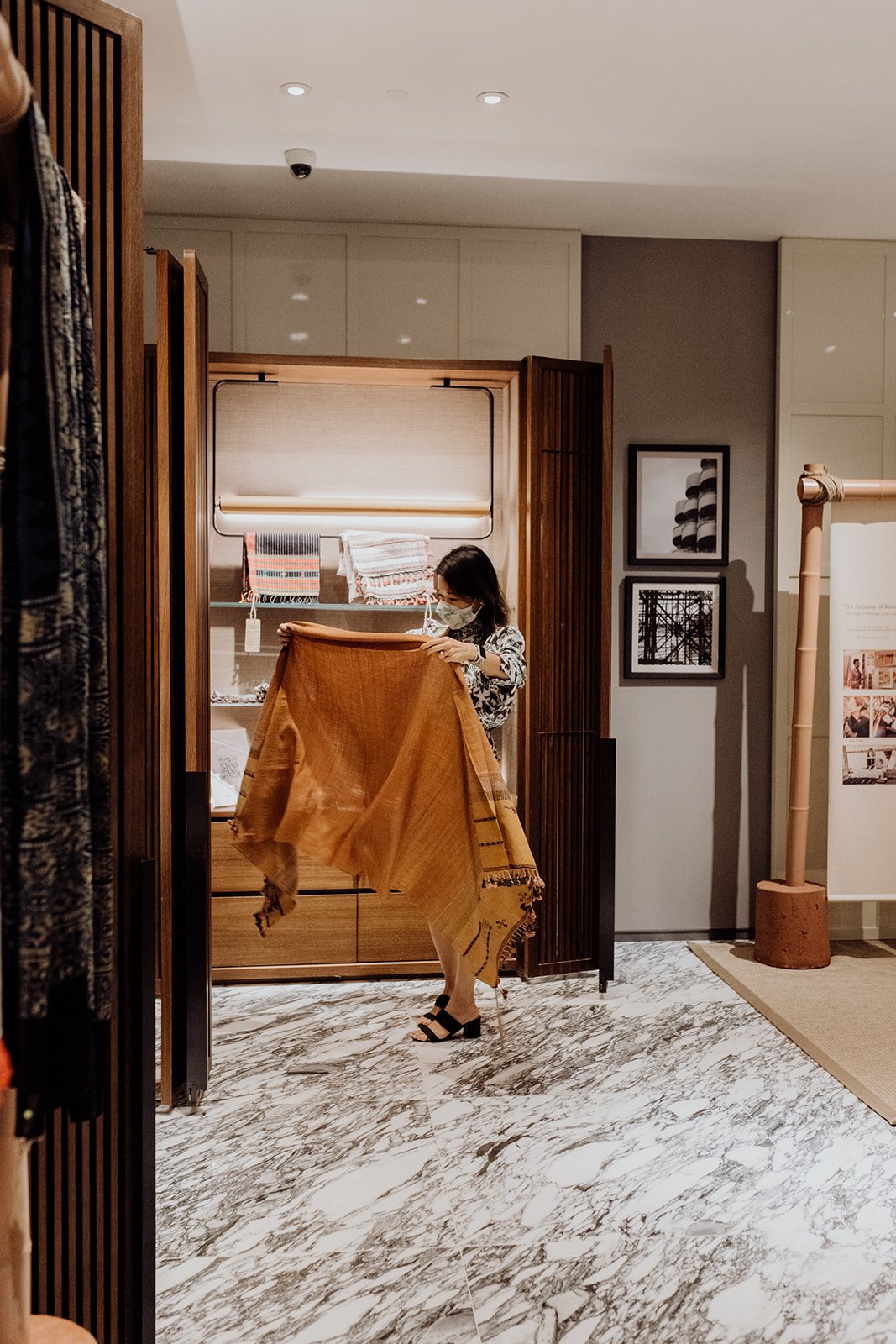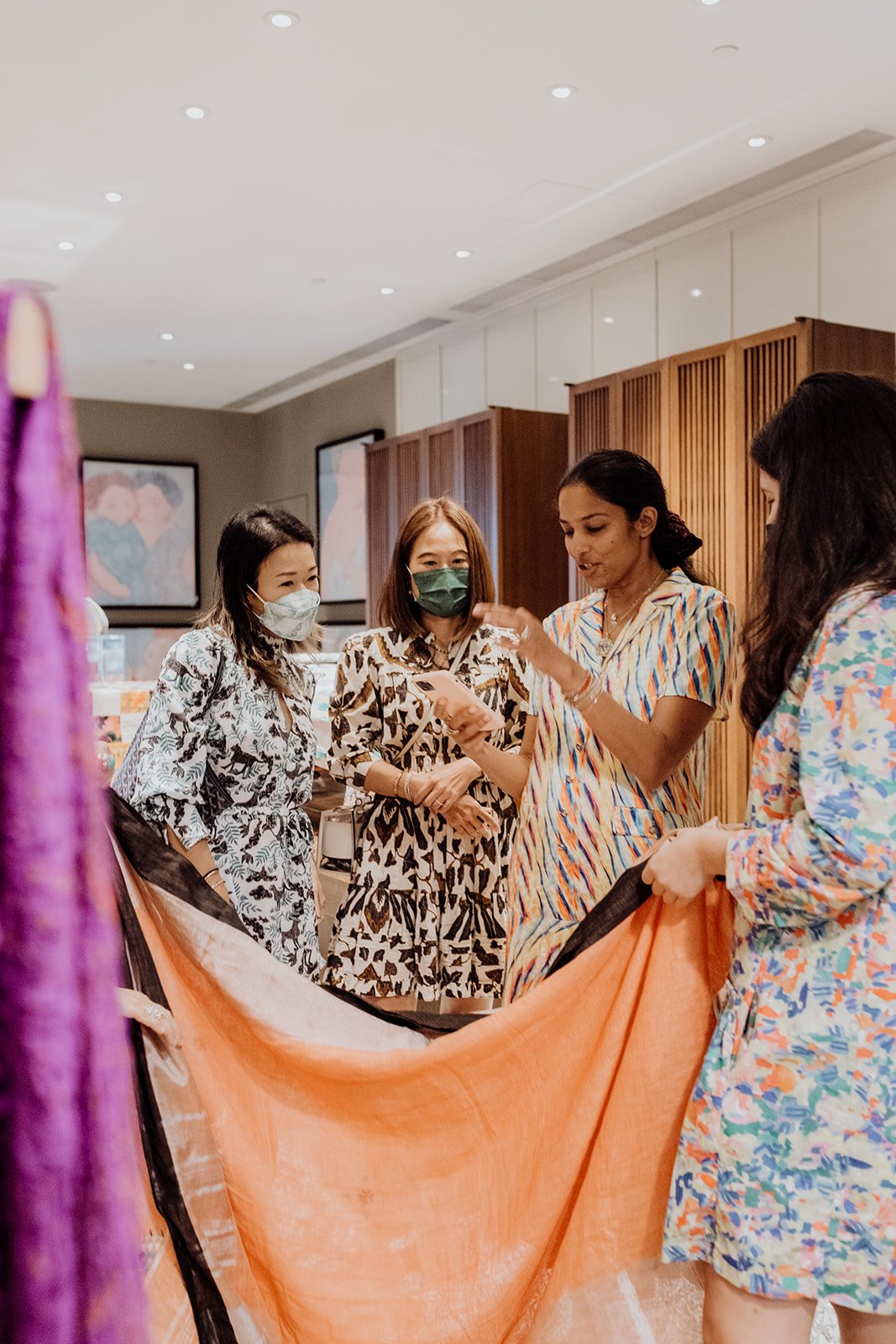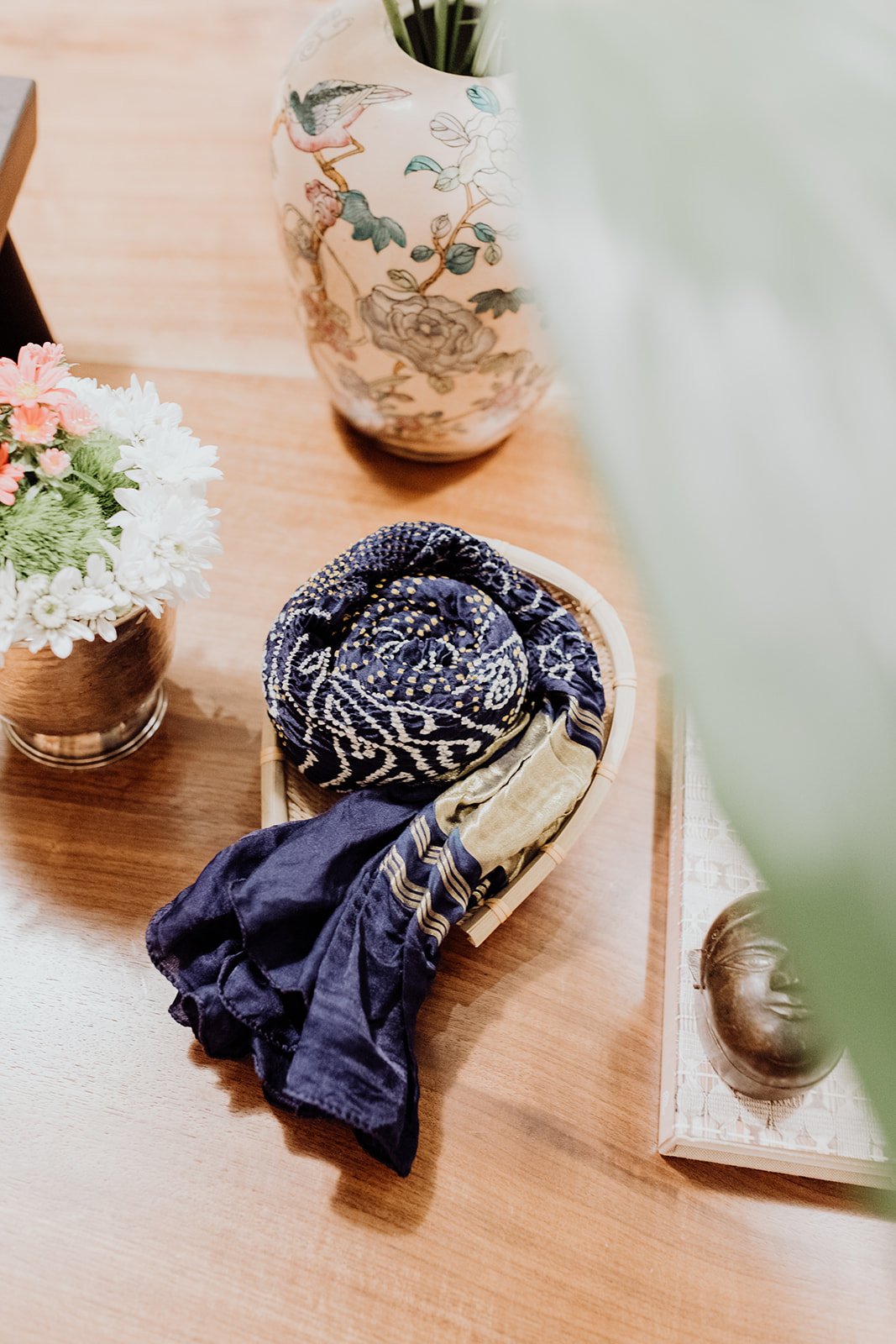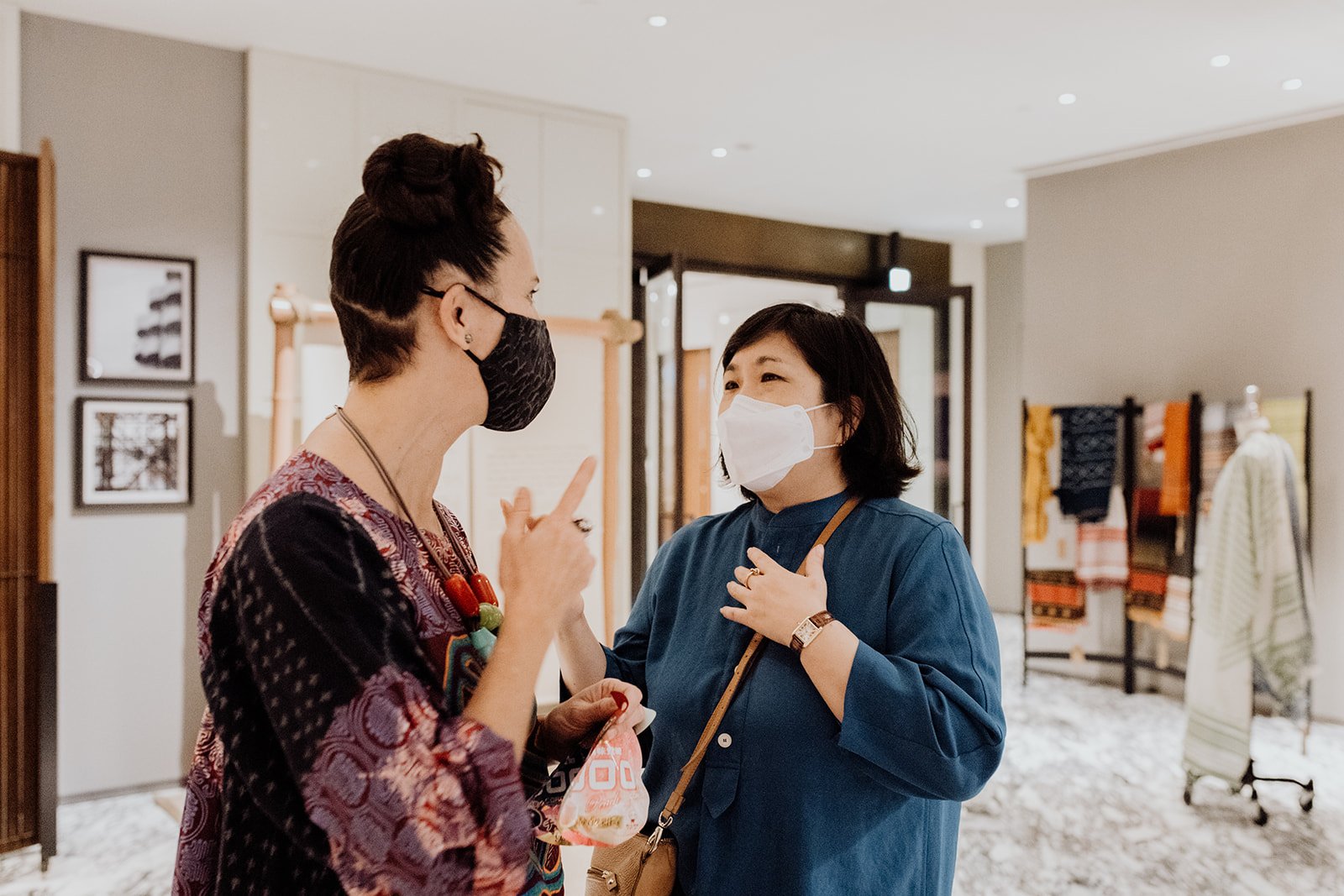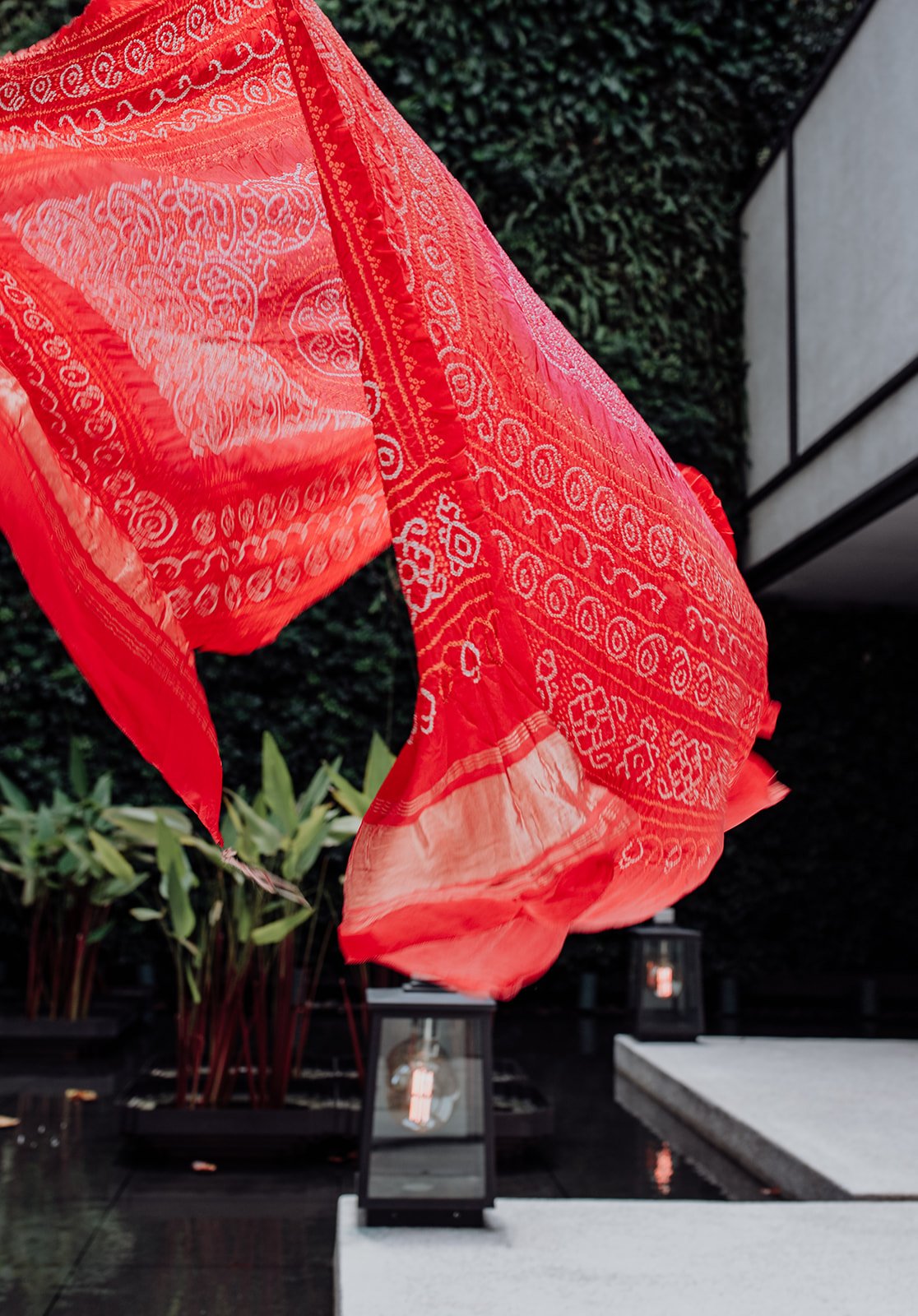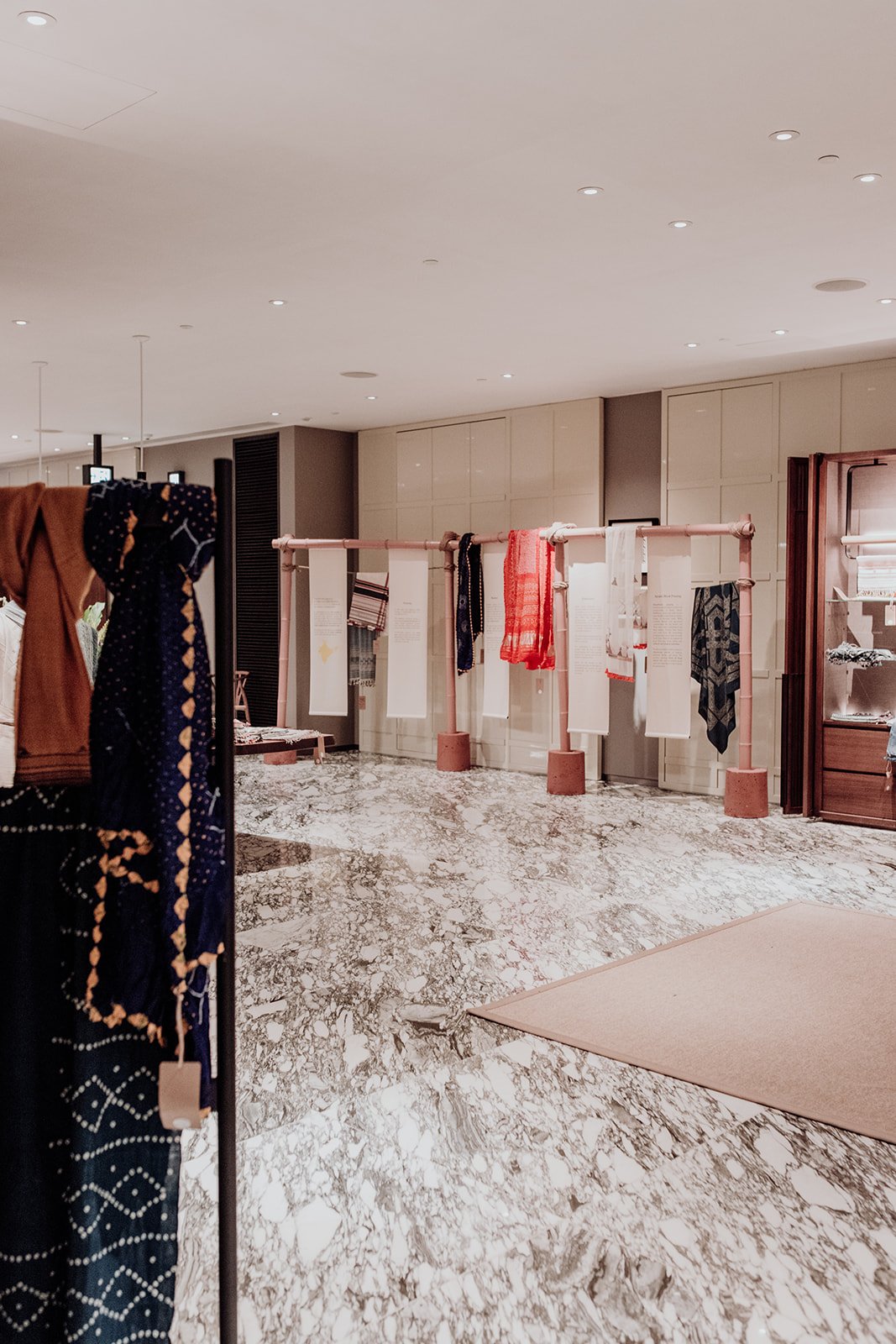
Rehnuma, the Guiding Star:
Textile Exhibition
New York, November 2024
Bridging distances in time, space, language and perspectives, Connecting for India presented a collection of unique textiles hand printed and natural dyed by Ajrakh Artisan Designers in the desert of Kutch, India. Program graduates of Somaiya Kala Vidya responded to the theme "Rehnuma", aiming to amplify star motifs in their Ajrakh tradition. Each designer, while using a shared repertoire, brought a unique interpretation to the theme.
Judy Frater, a pioneer in design education for traditional artisans, discussed craft traditions, creative agency restoration through education, and personal expressions in Ajrakh textiles. She emphasized the human connection in handmade crafts, highlighting the value of individual creativity. Acquiring work from an Artisan Designer, according to artisans, fosters a lasting connection as "the textile slowly wears away, we remember the person who made it."
Ajrakh is a centuries old hand printed textile tradition from the Northern part of the Indian subcontinent. Creating Ajrakh requires skill in carving fine symmetrical wood blocks, and in registration of multiple block impressions. At least three perfectly matched blocks are used to create each multi-colored pattern. Ajrakh requires knowledge of the chemistry of complex resist, mordant and natural dye substances, and expert dyeing. Ajrakh also requires patience; the slower the work, the better the quality.
Innovating within the tradition requires much more. The textiles in the exhibition were engineered: Artisan Designers planned their designs in their imaginations. They hand placed blocks in new geometric and asymmetrical compositions rather than stamping them in the regular rows of traditional textiles. They made patterns by masking with paper and developed new color schemes. They took the time to pivot from producing merchandise to creating art.
There is a growing need to reinvent a shared understanding of craft and intimate connection between artisan and consumer. Toward this goal, the exhibition sought to illuminate the thought and technical innovation embedded in the unique textiles, and create value for both concept and creation.
In a world concerned with its very existence, hand craft teaches much about values and human connection. The original way of creating Ajrakh was steeped in value. Artisans did not waste materials because they valued them; they also valued their own skills and efforts, and their consumers. The most basic tenet of conservation is that you preserve what you value.
The essence of hand craft is that it is made by an individual. The value of human creativity is in the little details that bring a textile alive, in a glimpse of how the individual met a challenge and created something new.
